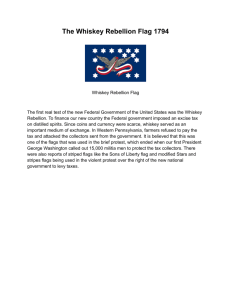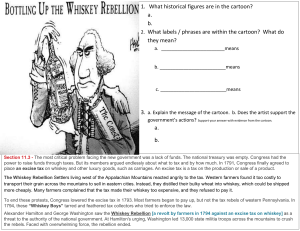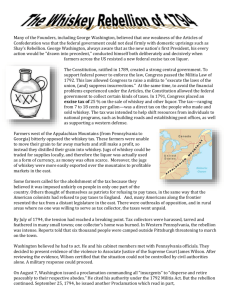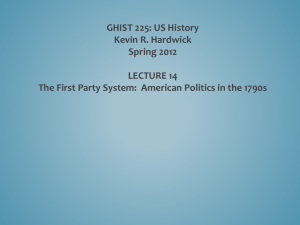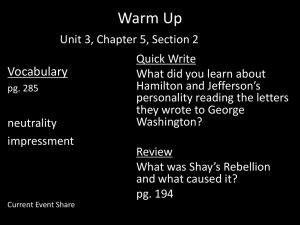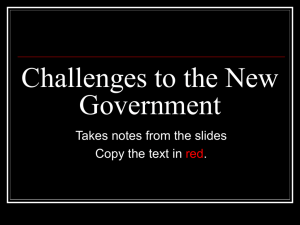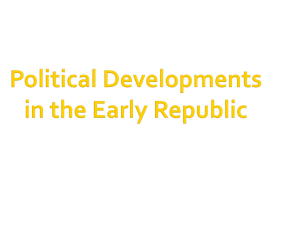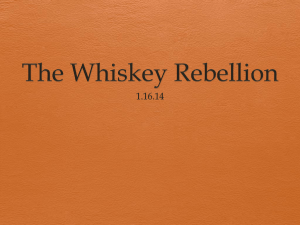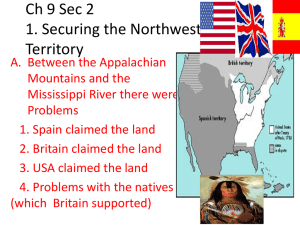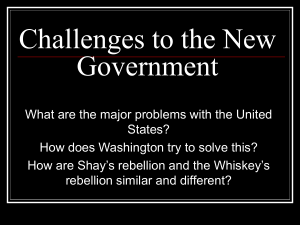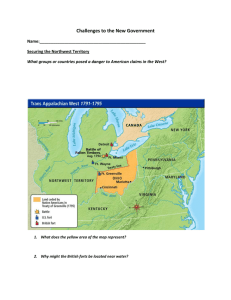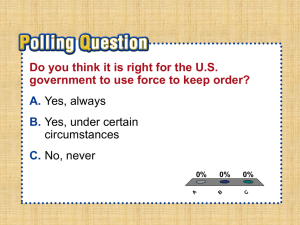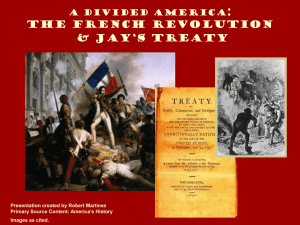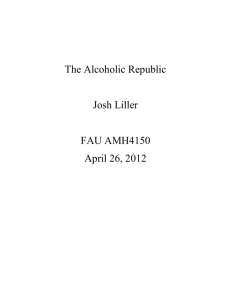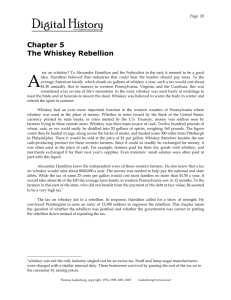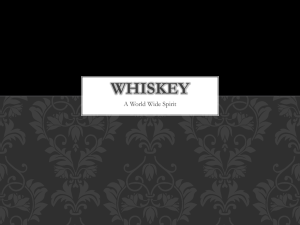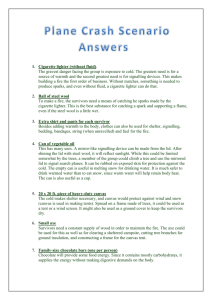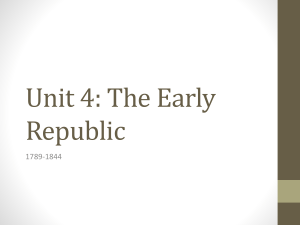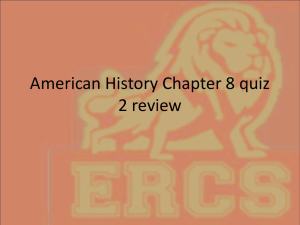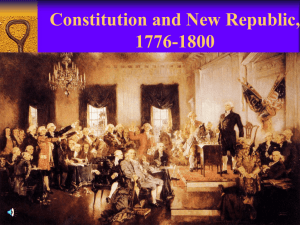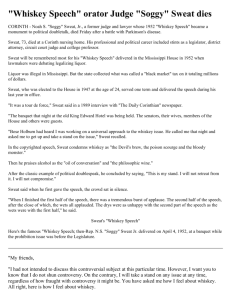The Whiskey Rebellion Powerpoint
advertisement
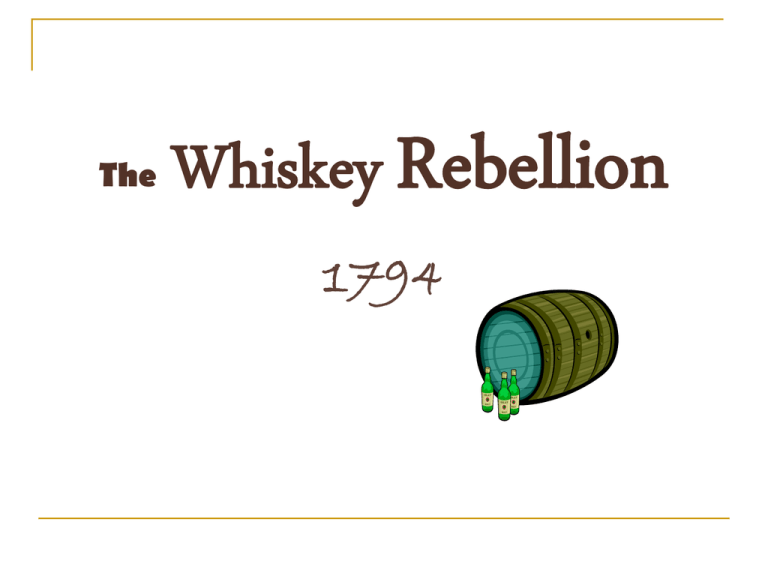
The Whiskey Rebellion 1794 What was it? A new tax was passed on farmers who sold their grain in the form of whiskey. The farmers resented this tax and rebelled against the tax collectors, harassing them. George Washington sent in a militia made up of over 10,000 soldiers to stop the rebels. Most of the rebels had left the countryside by the time the militia arrived. The Whiskey Tax was eventually repealed in 1801. When? The Whiskey Rebellion occurred in 1794. This was during George Washington’s presidency. Some say that the rebellion came to a climax in July 1794 when 500 armed men attacked the tax inspector, John Neville. George Washington managed to calm things down, but the whiskey tax wasn’t repealed until 1801. Who? The Whiskey Rebellion was generally between the farmers and the tax collectors. The Whiskey Tax was Alexander Hamilton’s idea. George Washington sent in troops to calm things down. General John Neville was one of the many tax collectors who was attacked by the rebel farmers. George Washington Alexander Hamilton Where? The Whiskey Rebellion mainly occurred in Western PA. On the “western frontier”, violence was more commonly used. A militia from various states including Virginia, North Carolina, and Maryland came to Western PA to help put down the rebellion. Why? Creating a tax on whiskey was Alexander Hamilton’s idea to pay off the nation’s debt. The farmers rebelled mainly because they said they couldn’t afford to pay the new tax. The Whiskey Rebellion was an important part of American history because it was one of the first tests of power of the new federal government.
